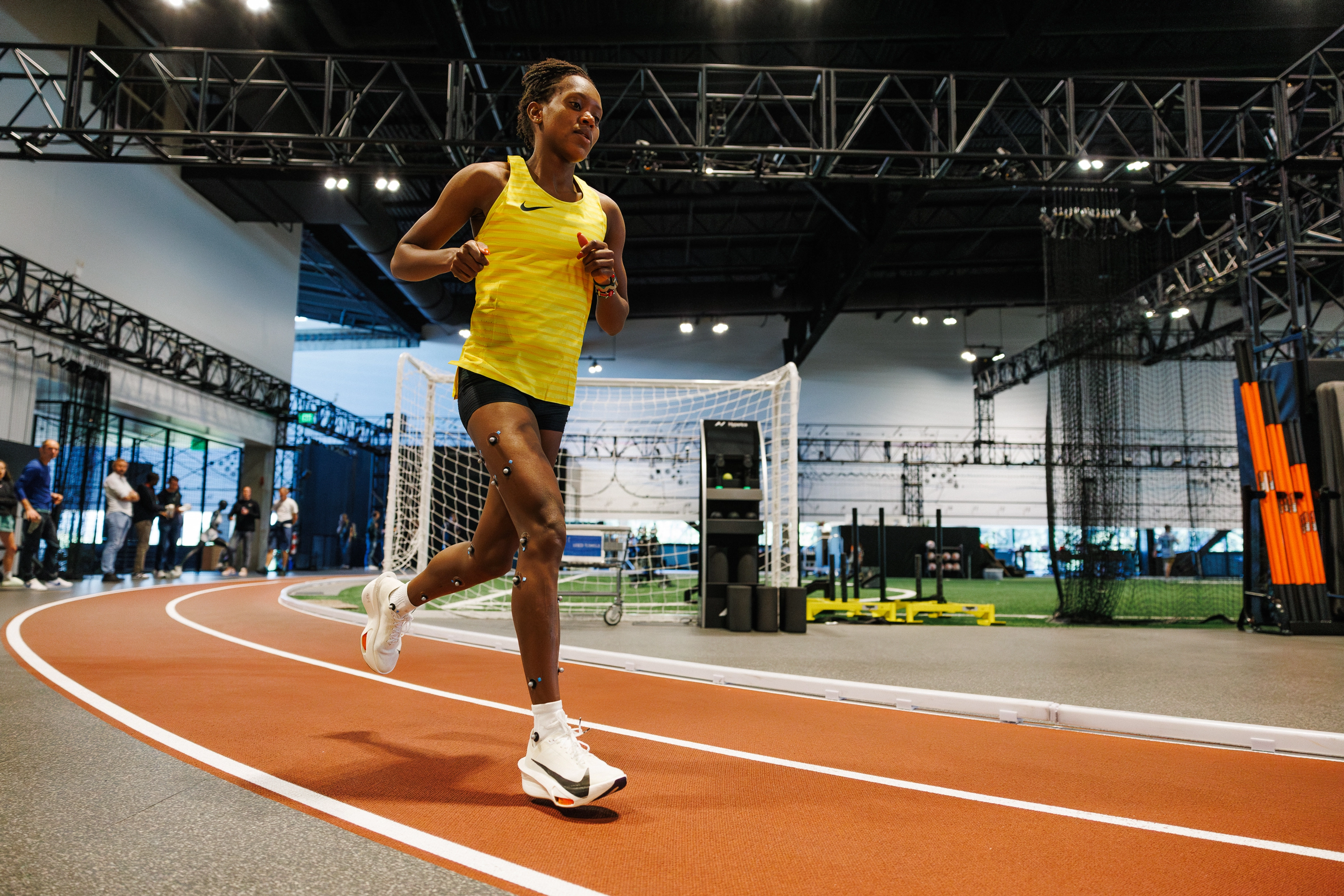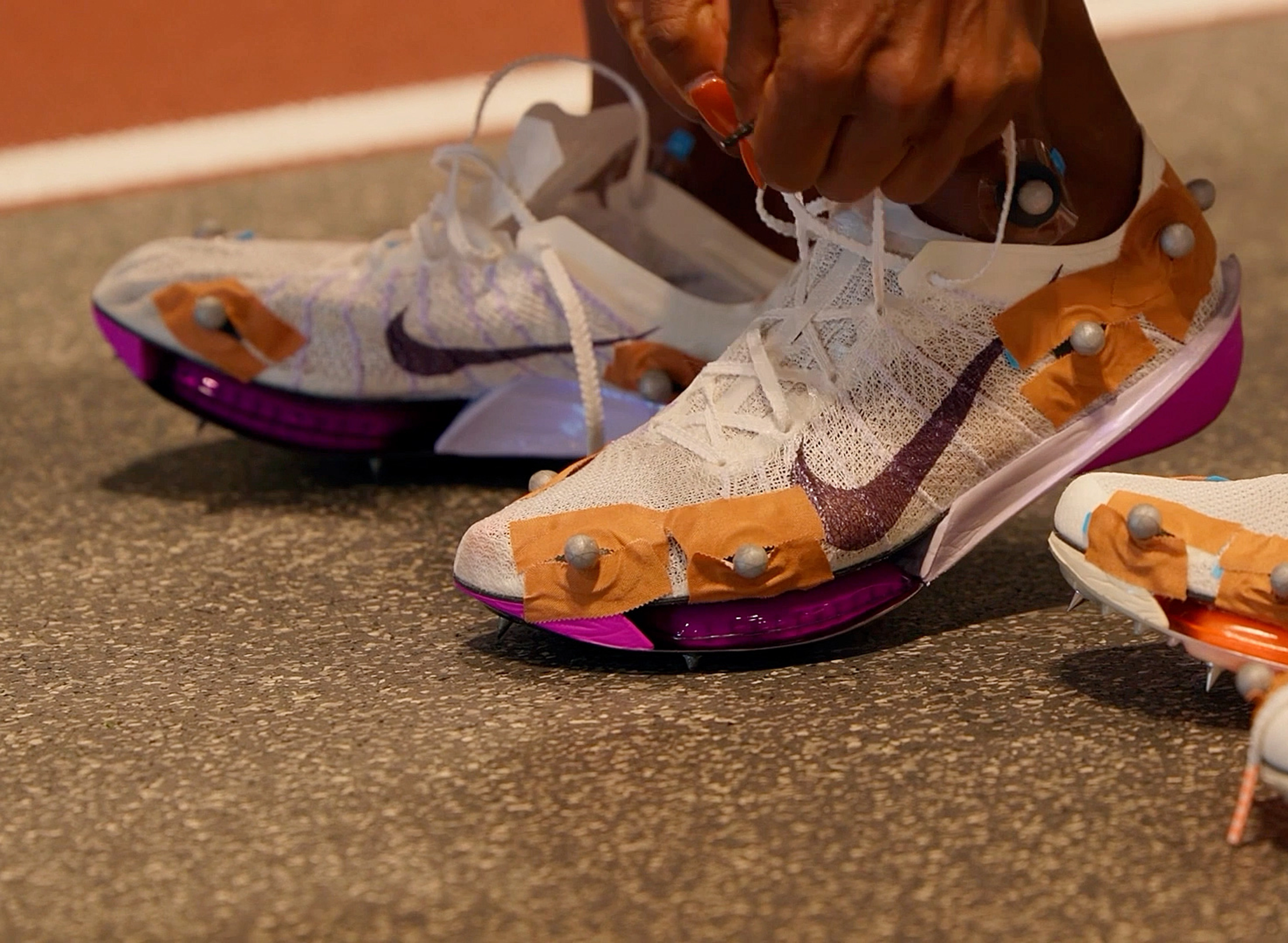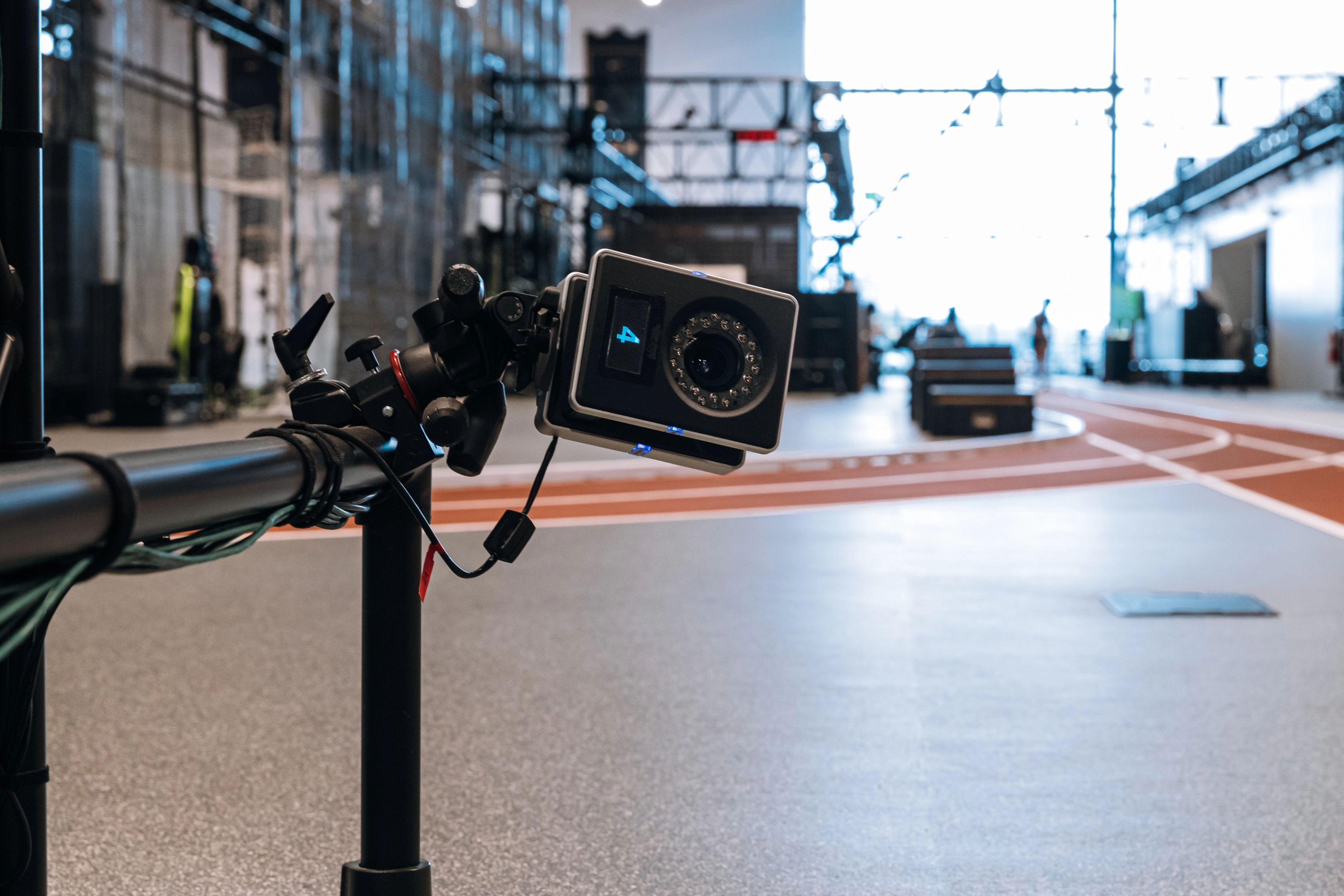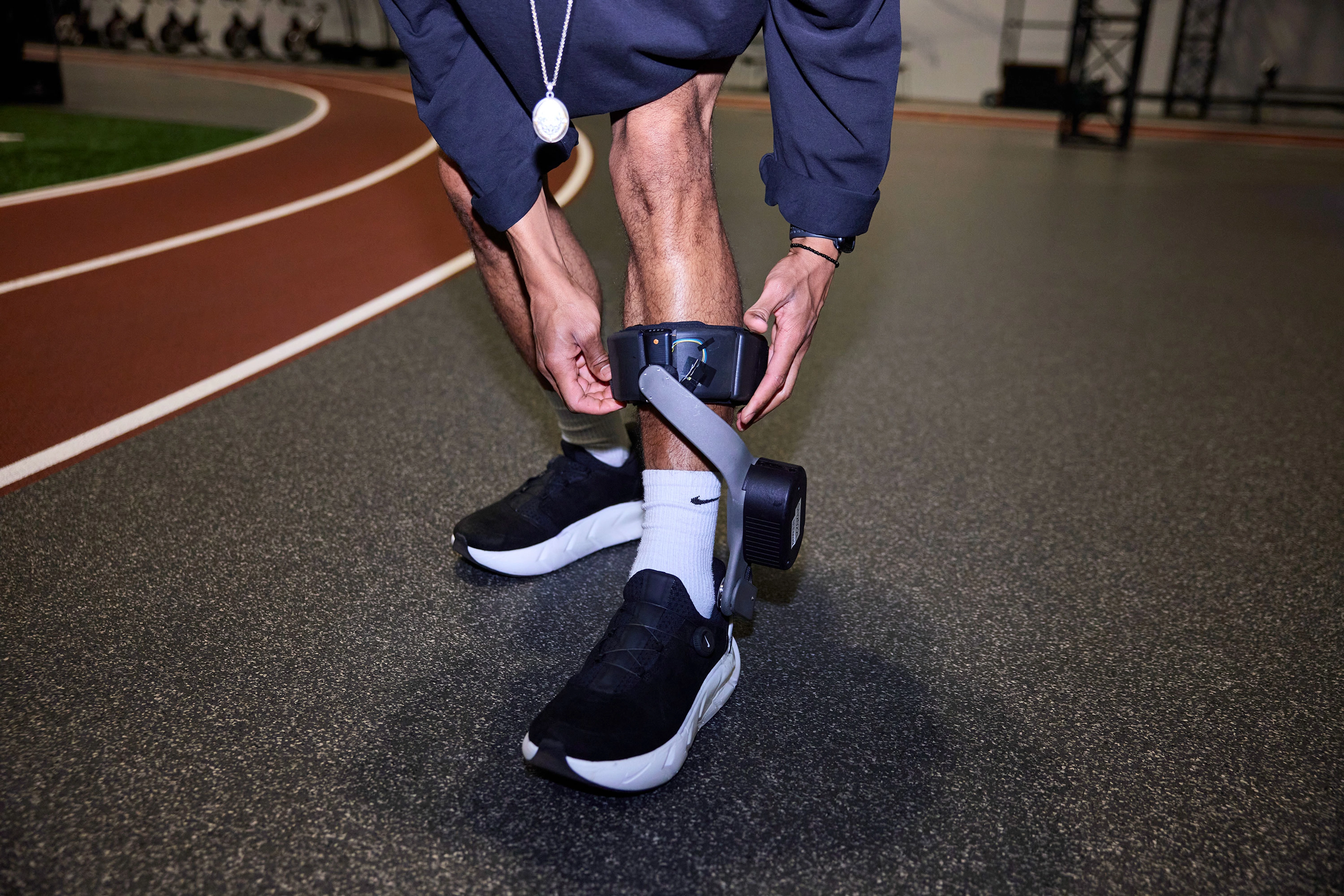The NSRL Fieldhouse Track
- November 13, 2025
The 200-meter track in the Nike Sport Research Lab (NSRL) is more than a workout space. It’s a supercharged testing environment that allows Nike scientists to study how athletes move while wearing new shoes and technologies — and how to make those products the best in the industry.
What It Does
Look up, and you’ll see one example of the track’s capabilities: Above the two lanes and rigged onto steel erectors is a collection of high-res motion-capture (“mo-cap”) cameras that can collect 250 snapshots of reflective marker data per second as an athlete moves around the track. Look down: Force plates situated beneath the track’s rubber surface collect up to 2,500 contact-force data points per second as an athlete hits the ground.
NSRL researchers can set an LED pace light system, or “rabbit,” along the track’s innermost lane for paces from casual walking all the way to simulating world record times. The track also has practical features ideal for testing product across a variety of surfaces. For example, both the backstretch and the homestretch have a concrete lane to simulate running on sidewalks and roads.
What It Helps Us Do
An athlete like Faith Kipyegon makes running look effortless. The NSRL track's capabilities help scientists quantify the poetry of her elite athleticism. Last year, in preparation for her attempt to break the four-minute mile, Kipyegon visited the NSRL, undergoing multiple tests on the track. Scientists placed mo-cap sensors over her body to analyze how a range of Nike spike prototypes influenced her gait pattern. In another test, a data-informed resistance sprint device was attached to Kipyegon to measure her power output at full speed. Near the track, Nike researchers tapped into an array of testing tools to measure Kipyegon's aerobic and anaerobic profile, such as her V02 max.
Testing for Breaking4
Nike uses nuanced testing environments like the track to study not just the traits of elite athletes, but the types of wearable technologies that can help every athlete move more efficiently.
Enter Project Amplify, a powered footwear system designed to act like an e-bike for the human body. Nike research teams logged most of its 1,500 miles from test participants on the NSRL track. That’s more than 12,000 laps, with data measured from over 2.4 million steps. To keep up with the participants, Nike scientists actually used a motorized scooter and rode around the track during experiments to log real-time data on the device.
Project Amplify
For Project Amplify, the volume of data researchers measured on the track was crucial to quantify how an athlete moves, the amount of energy they're using, and how they feel while they're moving. When testing for Amplify’s metabolic benefit — whether athletes could move farther while using the same amount of energy — Nike researchers found that many athletes experienced a metabolic boost while running. For those who saw the greatest benefit, it was like going from a 12-minute mile to a 10-minute mile while expending the same amount of effort. Walking benefits were even greater.
Of course, sometimes you need the immediate validation of seeing how you’re faster than you were before. NSRL researchers programmed the track’s LED pace light system to do a runner’s typical, non-augmented pace — say, that 12-minute mile — then asked the participant to wear Project Amplify and try to hold their usual speed. Many of the athletes found it a challenge to slow down and keep even — they almost couldn’t help moving faster. They found a capability they didn’t know they had in them. And the NSRL track was a crucial tool in helping them find it.




